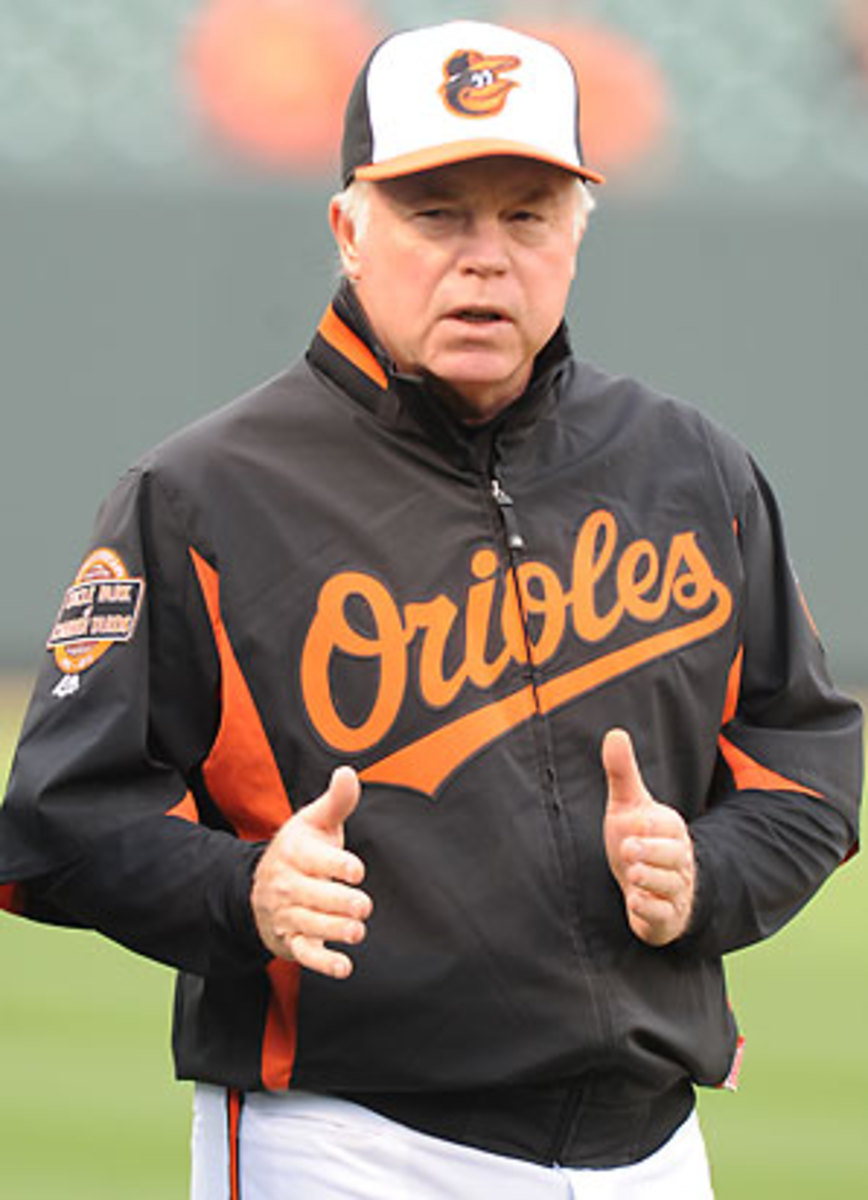Buck Showalter has his surprising Baltimore Orioles right on schedule
Buck Showalter recently became the 58th manager in baseball history to win 1,000 games. But he is one of only two men to win 1,000 games with a winning record (1,005-961) and never win a pennant. The other is Felipe Alou (1,033-1,021).
Nobody is ready to hand his Baltimore Orioles a pennant just yet, but the Orioles have jumped out to a 20-12 start that makes them one of the big surprises in baseball -- unless you took note of a pattern to Showalter's previous work with the Yankees, Diamondbacks and Rangers.
Few managers run a more efficient, productive spring training than Showalter. Give him two spring trainings with a club (consider the first a writeoff for evaluation and culture shock) and you'll see the payoff.
Showalter took over Baltimore midseason in 2010, so this season the improved Orioles are showing the Showalter stamp from two spring trainings.
Look at it this way: Showalter's managerial career broken down to three distinct segments: what his teams have done in the season with a second spring training with Showalter, and what they have done before and after such signature seasons:
Little did I know when I identified the problem with closers that it was about to get worse. The toll of closers who have been injured or removed from the job now has reached 12 -- after barely 20 percent of the season has been played. The longest tenured closer in the big, bad AL East is Jim Johnson of the Orioles, who has been in the role for his team all the way back to . . . last September.
David Robertson blew his first save this week trying to replace Mariano Rivera. It was predictable to see Yankees manager Joe Girardi use Robertson the way he used Rivera and the way just about every manager uses his closer: save him for the start of the ninth inning. (Philadelphia manager Charlie Manuel has lost five games this year while staying true to another one of the Closer Commandments: Thou shalt not use your closer in a tie game on the road.)
The use of Robertson will be particularly interesting to watch because he has proved that he can get more than three outs. In fact, relief usage is so nonsensical that the better you do your job the less you get used. Check out this pattern of how many times Robertson has pitched more than one inning over the past three years:
2010: 16
2011: 9
2012: 1
This is not about Girardi and the Yankees, either. I find this stat truly amazing: there have been only 12 saves of more than three outs this year -- and the vast majority of those belong to middle relievers who simply finished out a game as it got out of hand. Nobody -- nobody! -- has two saves of more than three outs.
In 1990 there were 519 saves of more than three outs. Last year there were only 82. And this year we are on a pace for 60.
Where have all the independent thinking managers gone?
Just how good are the Texas Rangers? This quote from one manager should give you an idea: "I've had three or four scouts tell me independently they are the best team in the American League over the past 10-12 years."
The Rangers have scored the most runs and allowed the fewest in the league. They have outscored opponents by 68 runs over 33 games -- an advantage of 2.06 runs per game, which is more than the final differential of the 114-win 1998 Yankees (1.91 per game, or 309 over the season).
Texas' run differential blows away the biggest differentials in the league from the past decade, the 2011 Yankees and 2007 Red Sox (both at 1.30 per game, or 210 over the full season). Of course, it's much too early to know if Texas can keep up this pace. But based on the first 33 games, yes, the scouts have it right: The Rangers do look like they can be the best team in the league in a decade.
And how much does run differential mean? Here are the best season run differentials among the past 10 AL yearly leaders and how those teams finished:






